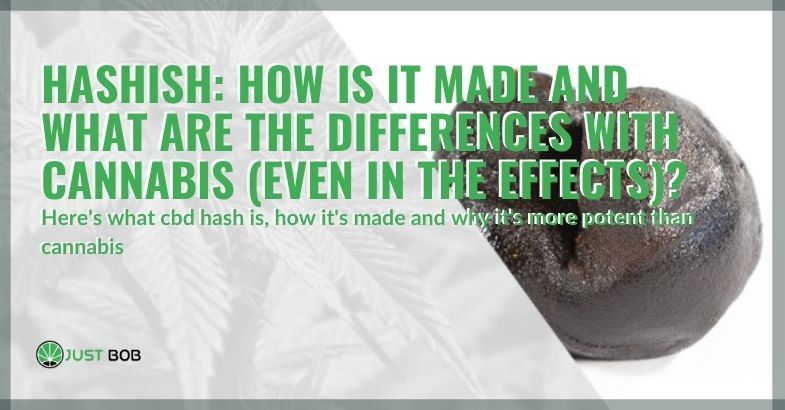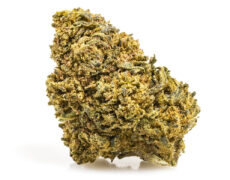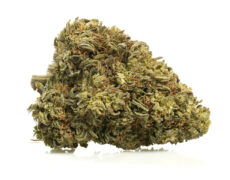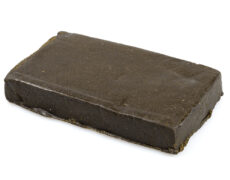Modified on: 09/01/2024
Everything you need to know about hashish, the most famous cannabis plant product par excellence
Hashish, also called hash, is one of the most renowned products derived from cannabis globally. It can be made both industrially and in the home (with a great dose of patience). It has also been reproduced in its CBD version, the only legal version in the UK that you can find on Justbob.
But how is hashish made, and why is it so sought after? What are the differences between smoking and marijuana?
Let’s try to answer these questions clearly so that you can perfectly understand the method of making this product!
A Brief History of Hashish
Hashish, a concentrated form of cannabis, has a rich history that spans centuries and cultures. Derived from the cannabis plant, specifically Cannabis sativa and Cannabis indica, hashish has been valued for both its medicinal and recreational properties.
The production of hashish involves collecting the resin glands, commonly referred to as trichomes, from the plant material. This sticky resin is then compressed into a solid, potent form known as hashish. The process of making hash has evolved over time, with various techniques such as the traditional hand-rolling method, the use of water pipes, and more modern methods like hash oils, including the notorious butane honey oil.
Hashish has been used in the Middle East for centuries, with historical records dating back to ancient civilizations. The mind-altering effects of hashish have been appreciated for inducing altered perception, heightened sensory experiences, and distorted perception, making it a substance of choice for various cultural and spiritual practices.
In more recent times, hashish has found its way into the medical community, with increasing recognition of its potential medicinal purposes. Studies suggest that certain cannabinoids in hashish may have therapeutic benefits, such as alleviating symptoms like chronic pain, nausea, and muscle spasms.
However, the recreational use of hashish is not without its health risks. The concentrated levels of THC found in hashish can lead to cardiovascular problems, altered brain development, and heightened susceptibility to mental health issues. Additionally, hashish use may result in increased appetite, commonly known as the “munchies.”
As cannabis and hashish became popular for recreational purposes, concerns arose about potential addiction and withdrawal symptoms associated with cannabis use disorder. Despite cannabis being considered a non-addictive substance by some, vulnerable individuals may experience constant cravings, leading to challenges in the recovery process seeking treatment.
In the United States, federal law classifies cannabis, including hashish, as a Schedule I substance, highlighting the potential health risks associated with its use. National surveys indicate widespread cannabis and hashish use, emphasizing the importance of understanding the effects and risks of illicit drugs, especially for vulnerable populations.
While hashish continues to be a controversial substance, ongoing research and treatment options aim to address the complex relationship between hash potency, cannabis use and health effects. As the landscape of cannabis products evolves, it becomes crucial for individuals to make informed choices about their consumption, considering both the potential benefits and risks associated with hashish and other marijuana products.
What is hashish, and how is it made?
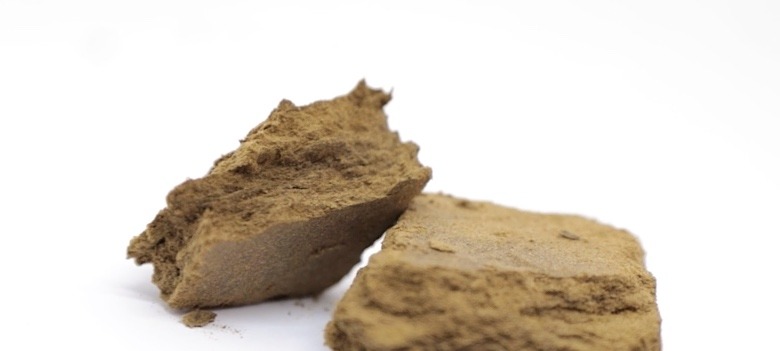

As you may know, hashish takes the form of a block or a sphere of variable color, ranging from light green to very dark brown.
Specifically, it is a cannabis pollen concentrate, called kief, mechanically separated from the buds and processed to become a malleable and aromatic product. Pollen is precisely the resin produced by the mature trichomes of cannabis, rich in cannabinoids, among which THC (in illegal weed in the UK) and CBD (in legal weed uk) prevail.
Once the hashish producers have extracted the resin from dried or fresh plants, they let it mature to cool the outermost layer.
Subsequently, those who buy cbd hash use it like marijuana, crumbling it and then inhaling it by vaporization or combustion. However, since hashish is a resin concentrate rich in cannabinoids, its effects are far superior to those of cannabis flowers!
Small quantities of this product are enough to experience intense and lasting sensations.
You must also know that there are different types of hashish and that this product’s development varies according to them.
Hashish: how is it done? It all depends on the various types of this product!
As we have anticipated, different types of hashish are divided into 3 broad categories by preparation method. Here are which ones:
- Resin rubbed from fresh plants (Indian hashish, also called Charas)
- Dry sieved resin (Afghan, Nepalese, Moroccan and hashish Burbuka)
- Bubble hash, also called Ice Wax, is extracted with ice water.
Let’s see, below, the details about these methods.
Read also: How to store hashish? Here are the most effective ways
Extraction of resin from still fresh plants to obtain Charas hashish
The method of extracting the resin from the still fresh marijuana plants and then bringing it to maturity and getting the Charas hashish is typical of India … But it has been replicated in many other parts of the world, up to the legal hash landscape in Europe.
How is “fresh” resin extracted from cannabis plants?
The method is straightforward to explain but highly laborious to put into practice. Producers of Charas, the only hash made from fresh plants, rub the tops of cannabis plants in their hands.
By doing so, the resin adheres to the palms and fingers. From time to time, the workers involved in making Charas scrape the resin from their hands thanks to a unique tool, forming natural curls of sticky material.
Working the resin between the palms, they obtain small malleable spheres.
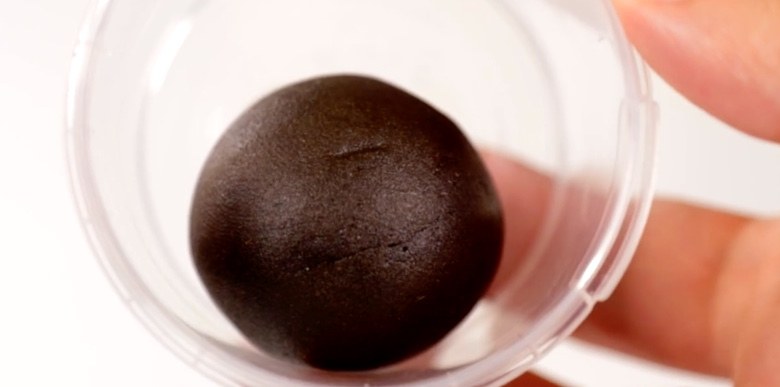

The producers let them mature until they take on a color that changes from brown to black and then put them on the market.
Dry sieving of the resin to produce Burbuka, Afghan hashish and many other types of smoke
Dry cannabis sieving is the most widely used method in the world to obtain quality CBD hash. Basically, we start with both dried and frozen marijuana buds because the trichomes separate much more easily from the flowers when they are very cold.
To scrape the resin from the buds, artisanal hash makers arm themselves with a sieve to place over a container. By rubbing the cannabis buds on the sieve, the container fills with kief. The workers then heat and press the kief by placing it in special plates and using a rolling pin.
This way, they obtain numerous malleable blocks of variable color, ranging from white to light green, from dark green to brown.
Of course, the industrial process is simpler and faster than the artisan one and guarantees the exact same quality to hashish.
How to make bubble hash, one of the newest methods of making hashish?
Ice Wax, also known as Bubble Hash, is a type of hashish born around the 90s, therefore in much more recent times than Charas and dry-rubbed hashish.
To produce this variety of hash, it is necessary, first, to equip yourself with a particular tool called Bubble box or Bubble bag, which allows the extraction of only the resin almost entirely free of any other plant residue!
How should you proceed?
Frozen cannabis CBD buds are immersed in very cold, almost frozen water. Then the water is filtered thanks to the Bubble bag or another dedicated tool. The bags or boxes for the Ice Wax contain several sieves, one under the other, which can have increasingly narrower meshes, as you can well imagine.
The sieves allow producers to extract trichomes of different thicknesses and separate every single herb residue from the resin.
Once all the water has been drained, it is necessary to press the resin into small lumps on absorbent paper to eliminate the humidity present in it and prevent mould formation.
Subsequently, the trichomes must be stored in a cool and dry place to dry within about 2 weeks.
Hashish Derivatives from Cannabis Plants: Exploring Hash Oil
Hashish, derived from the cannabis plant, has evolved into various forms, and one notable derivative is hash oil. This concentrated cannabis product, sourced from Cannabis sativa and Cannabis indica strains, has gained attention for its potency and versatility in both medicinal and recreational applications.
Hashish Oil Production:
Hashish oil is produced by extracting the essential oils, including cannabinoids like THC, from the sticky resin glands of the cannabis plant. This process involves utilizing solvents to separate the concentrated oils from the plant material. The resulting hashish oil is known for its high potency, containing elevated levels of THC compared to traditional forms of cannabis.
Effects on Perception:
When consumed, hashish oil can induce altered perception and heightened sensory experiences. Users often report intensified effects compared to smoking or consuming the same plant, in its natural state. The concentrated nature of hashish oil makes it a popular choice for those seeking a more potent and immediate impact.
Medical and Recreational Use:
Hashish oil has found applications in both medicinal and recreational use contexts. The concentrated THC levels in hashish oil make it suitable for addressing certain medical conditions, including chronic pain and nausea. However, its recreational use requires caution due to the potential for intensified effects and the risk of cannabis use disorder.
Health Considerations:
While hash CBD oil offers a unique cannabis product, it is crucial to consider potential health risks. The concentrated THC levels in hash production may lead to increased heart rate, altered blood pressure, and, in some cases, panic attacks. The impact on the brain’s reward system can contribute to dependence, and withdrawal symptoms may arise with prolonged use.
Comparison with Traditional Cannabis:
Hashish oil provides a different experience than traditional forms of cannabis. Its potency allows users to achieve the same effects with smaller or larger quantities used, making it a popular choice among those seeking a more intense experience. However, this concentrated form requires responsible use to avoid potential physical harm and complications.
Regulatory Landscape:
As with other canapa products, hash oil is subject to regulatory scrutiny, and its legal status varies across regions. National surveys indicate a growing interest in cannabis derivatives, emphasizing the need for effective regulation to ensure public safety and control.
In conclusion, hash oil represents a potent and concentrated form of cannabis, offering diverse possibilities for both medicinal and recreational users. Understanding its effects, potential risks, and regulatory considerations is essential for responsible consumption. As the landscape of cannabis products continues to evolve, hash oil remains a prominent player, prompting ongoing research and discussions about its place in the broader cannabis market.
In conclusion
Now you know everything about making hashish: how it’s made, the different types of this product, and what it consists of specifically. As you already know, in the UK, it is not allowed to produce hashish with a high THC content, but it is legal to make it with CBD buds with a high CBD content (and THC less than 0.2%).
Do you want to buy legal hash on the market?
Visit Justbob.shop, our online store with CBD flowers and CBD hash now. We are waiting for you!

